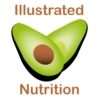From Fad to Framework: How the Food Pyramid Has Shaped Our Understanding of Nutrition

The food pyramid has been a mainstay in American culture for the past few decades. If you're a Gen Xer or Millennial, you probably remember seeing posters of the food pyramid plastered on the cafeteria walls at school, while you poked your bag of chocolate milk with a straw and ate your square piece of pizza. The food pyramid taught us what to eat and how much of it we should be consuming. But what happens when society's understanding of nutrition advances and the food pyramid is no longer an accurate representation? This blog post takes a look at the history of the food pyramid and discusses its limitations today.
Inception of the Food Pyramid
The food pyramid was first introduced in 1992 by the US Department of Agriculture. It suggested that a person should base their diet on six types of foods: grain, fruits, vegetables, milk and dairy products, fats and oils, and meats and beans. This meant that carbohydrates were to be consumed in large quantities while fats, proteins, and other nutrients were given less attention. The pyramid became a cultural touchstone and served as the basis for nutritional advice in schools, books, and magazines.
Food Pyramid Limitations
However, over time, nutritionists and health experts have come to realize that the food pyramid wasn't quite giving a complete picture of healthy eating. For one thing, it failed to address portion sizes or consider individual lifestyle needs. Additionally, it didn't factor in the amount of sugar, sodium, and saturated fats that many foods contain. As a result, nutritionists have crafted new dietary models that emphasize moderation rather than large quantities of certain food groups.
Big Food Hacking Americans
This lead to healthy food choices in America that were carbohydrate-heavy (ahem, sugar-heavy) and fat free. Which means Americans were eating high calorie sugars without the satiating experience of fat. We could call these "empty calories," and it means you eat more but feel less full and take little nutritional benefit. Basically, Big Food out-hacked the food pyramid, commercialized it, and broke it. As it turns out, Wonderbread wasn't all that wonderful even if felt smooth going down.
MyPlate
Today, the pyramid is being replaced by a plate-shaped model called MyPlate which divides food into five major categories: fruits, vegetables, grains, proteins, and dairy. It also offers advice for portion sizes and suggests that half of one's plate should be made up of fruits and veggies. I'm a big fan of that portion suggestion (rea, vegetables are good for you). This model shifts the emphasis away from potentially sugar-laced carbohydrates and towards healthier foods such as fish, nuts, and whole grains.
MyPlate Limitations
However, even MyPlate has its drawbacks. Like the food pyramid before it, MyPlate relies on a one-size-fits-all approach that doesn't consider individual dietary needs. Additionally, since it is sponsored by the US Government and Big Food companies, there is still potential for bias in what foods are recommended. Obviously, dairy and wheat do not need to be a part of your plate, but America is loaded with it, so it's on the agenda.
Conclusion
The food pyramid has come a long way since its first iteration in the 1990s, and it continues to evolve as scientists discover new information about nutrition. While it is no longer used as widely, its influence on our understanding of nutrition remains strong. By emphasizing a balanced diet and portion control, the food pyramid has helped shape the way we think about food and nutrition today. With the introduction of models such as MyPlate, we can look forward to a healthier future.
